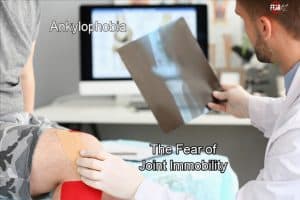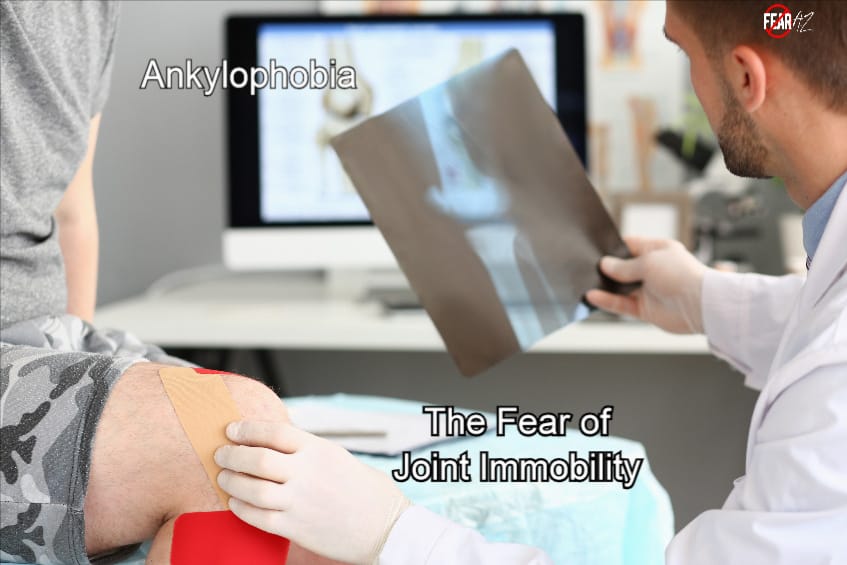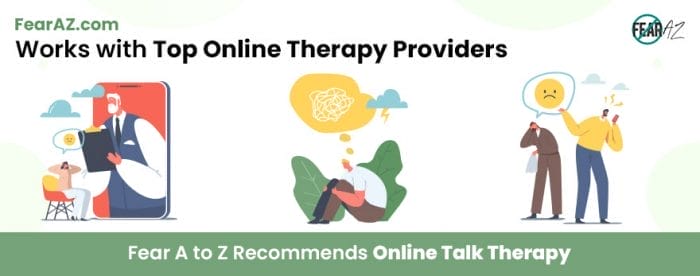Share This Article
Decoding the Fear of Joint Immobility
Does the fear of injuring your joints keep you from going out for a run? Or do you find it nauseating to look or think about injuries to the joints and bones?
The meaning of ankylophobia is a fear of ankylosis, which is the stiffening of the joints. If you’ve been avoiding every thought, discussion, or any form of exposure to risk of joint injury, then you may be suffering from ankylophobia.
No matter how crippling the situation might be, overcoming the fear of joint immobility is possible.
How does one begin?
Start by learning about its causes, symptoms, and possible treatments.

Ankylophobia Causes
Ankylophobia is typically rooted in a traumatizing event in the past. The triggering event may not have anything to do with an injury. It can include an experience where the patient witnessed someone else’s joint injury in person, in a film, or news report.
The phobia may also have no definitive cause.
While rare, some people may never recognize their ankylophobia due to a lack of awareness or exposure to triggers. However, not knowing about it and avoidance can worsen its symptoms.
People who are at a higher risk of developing this phobia might also:
- Get upset easily
- Have adrenal insufficiency
- Have a tendency towards fear and anxiety
- Have a genetic predisposition to mental illness
- Have been exposed to certain environmental factors
What You Need to Know about Ankylophobia
The definition of ankylophobia classifies it as a simple anxiety disorder but the condition can also develop into a complex phobia.
A person who fears the immobility of joints without it impacting their daily life can have a simple phobia. It becomes complex when the fear starts affecting their daily life and activities.
Note that being disgusted by joint injuries does not necessarily mean you have a phobia. A phobia may result in panic attacks that have a rapid onset and are largely based on irrational thoughts that cause fear. These responses also last for more than six months.
Symptoms of Ankylophobia
Ankylophobia might top the irrational fears list but its symptoms are similar to other types of phobias.
Symptoms can vary based on the type of stimulus and other environmental factors. Most will range from mild to severe and may include a combination of the manifestations listed below.
Physical Symptoms
- Headaches
- Dizziness
- Dry mouth
- Difficulty breathing
- Excessive sweating
- Trembling
- Nausea
- Pain or tightness in the chest
- Disorientation
- Numbness or pins and needles
- Hot or cold flashes
- Increase in blood pressure
- Tachycardia
- A need to go to the toilet
Psychological Symptoms
- Extreme anxiety
- Fear of death or dying
- Feelings of dread
- Irritability, anger, or mood swings
- Fear of losing control
- Confusion or difficulty concentrating
- Fear of harm or illness
- Feeling sad or hopeless
- Feeling disconnected
- Feelings of guilt, shame, or self-blame
- Withdrawing from society
- Depression
Treatment
How to Deal with Ankylophobia
Fears such as the fear of immobility of the joints do not commonly obstruct one’s daily lifestyle. Coming across triggers is also avoidable for most people. This may push patients to simply avoid facing the fear itself as a means of dealing with it.
But this isn’t a healthy way to handle the problem. In the long run, it puts you at risk of developing a more intense reaction to the fear stimulus.
While no singular solution can end the fear of joint immobility, there are treatments you can use in combination with each other to better manage the fear.
Professional Treatment
Professional treatments can help you deal with the root cause of your phobia instead of simply avoiding it.
Some of the most common treatments professionals use to treat ankylophobia are cognitive behavioral therapy (CBT), talking therapy, and antidepressant medications.
CBT is a form of therapy that focuses on thoughts and their influence on behavior. It is the most commonly used technique in the treatment of anxiety disorders.
A CBT treatment plan is similar to talking therapies. It may involve working with a mental health counselor across multiple sessions to understand the negative thought patterns behind the phobia.
CBT is impactful in treating phobias, anxiety disorders, and even depression. It is useful regardless of the severity of your phobia.
While prescription medications are common in the treatment of anxiety disorders, they may be used in combination with other measures.
Self-Help
Taking care of oneself is as important as professional treatments. Some of the common self-help strategies prioritize personal health to put a person’s mind and body in the right condition for healing.
Self-help strategies that work best with CBT therapies include meditation, exercise, and dietary changes.
All of these can work wonders at reducing stress and keeping it at bay in daily life. The calmer you are, the less cortisol (a stress hormone) flows through your bloodstream, ultimately keeping you from shifting into panic mode.
Regular aerobic exercise also increases the production of feel-good chemicals in the brain. Becoming physically fit can help if you’re feeling overwhelmed whenever you encounter a trigger.
Meditation can prove useful if you’re finding it challenging to regulate your emotions and thoughts.
Lastly, diet plays a major role in supporting your body through the changes. The first step you must take is to incorporate more healthy food into your diet. The second step is to cut down on caffeine, artificial sugars, processed foods, etc.
Learning How to Cope with Ankylophobia
It is easier to cope with a fear of immobility of the joints than it is to cope with some of the more common phobias, especially if your environment doesn’t expose you to triggers.
Regardless, once you do come across a trigger, it may become hard to ignore the phobia or postpone treatment.
If you want to commit to the treatment process, you’ll need to learn some coping mechanisms along the way. While self-help and professional counseling do most of the work, you should also consider getting support from family and friends.
A solid support system can help you stay on the right track and even encourage you to move past obstacles in your journey to recovery.
Learning about Ankylophobia Is the First Step to Healing
If you’re reading this, then you’ve overcome the most difficult obstacle in your journey to wellness: learning about ankylophobia and deciding to face it head-on.
With the right support, professional direction, and determination, overcoming ankylophobia is possible. Your fear can be managed and eradicated with time, patience, and consistent effort.




